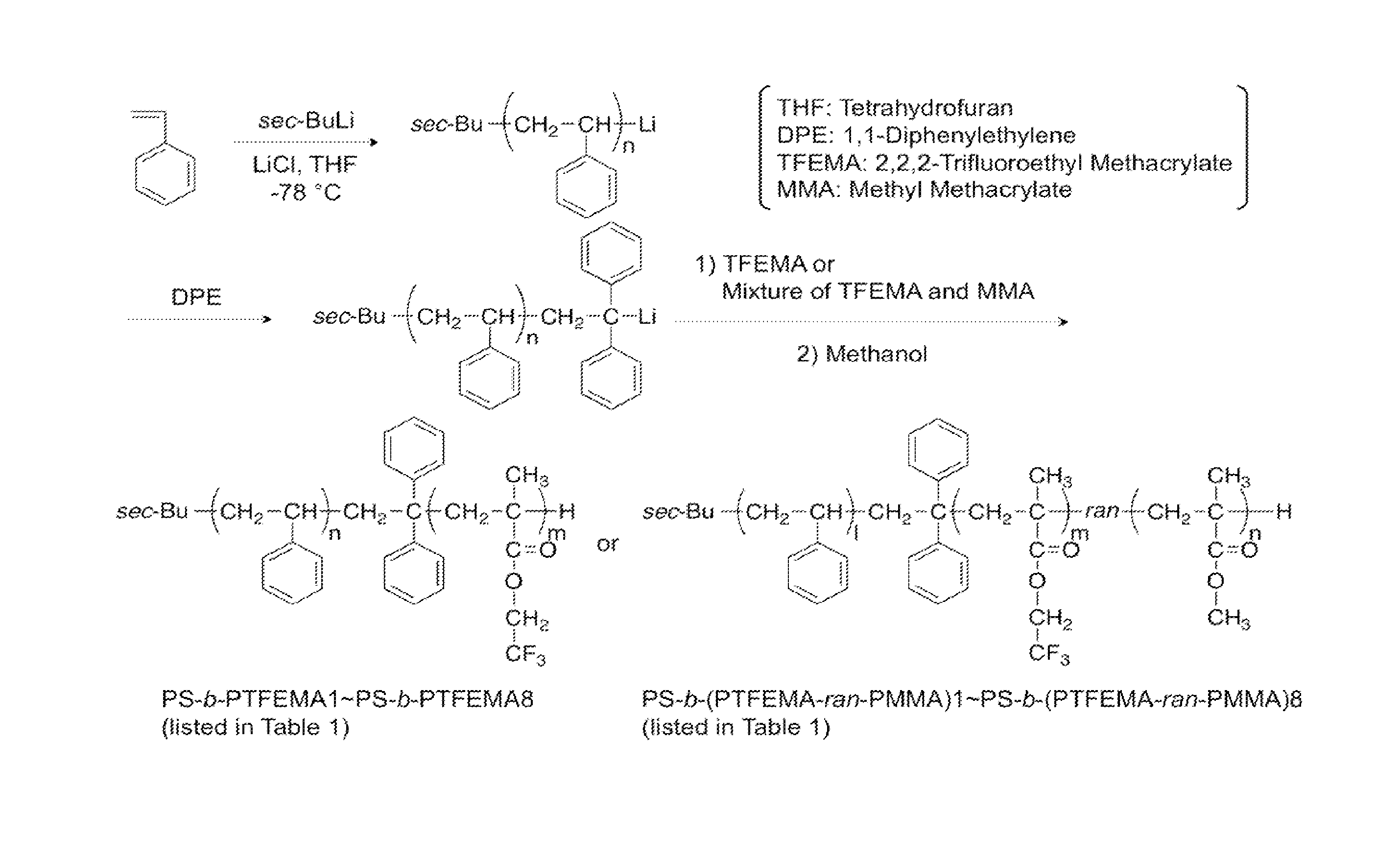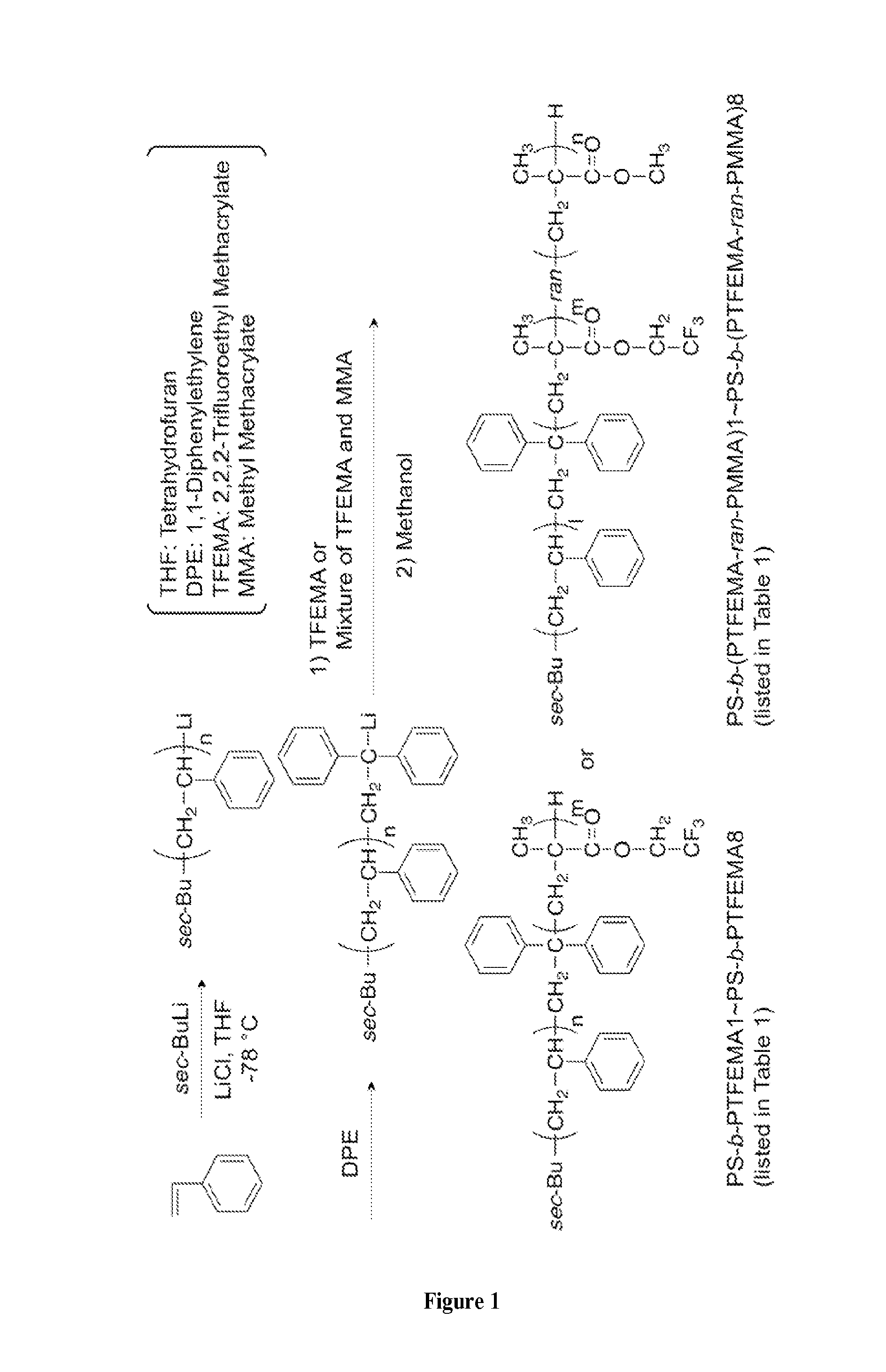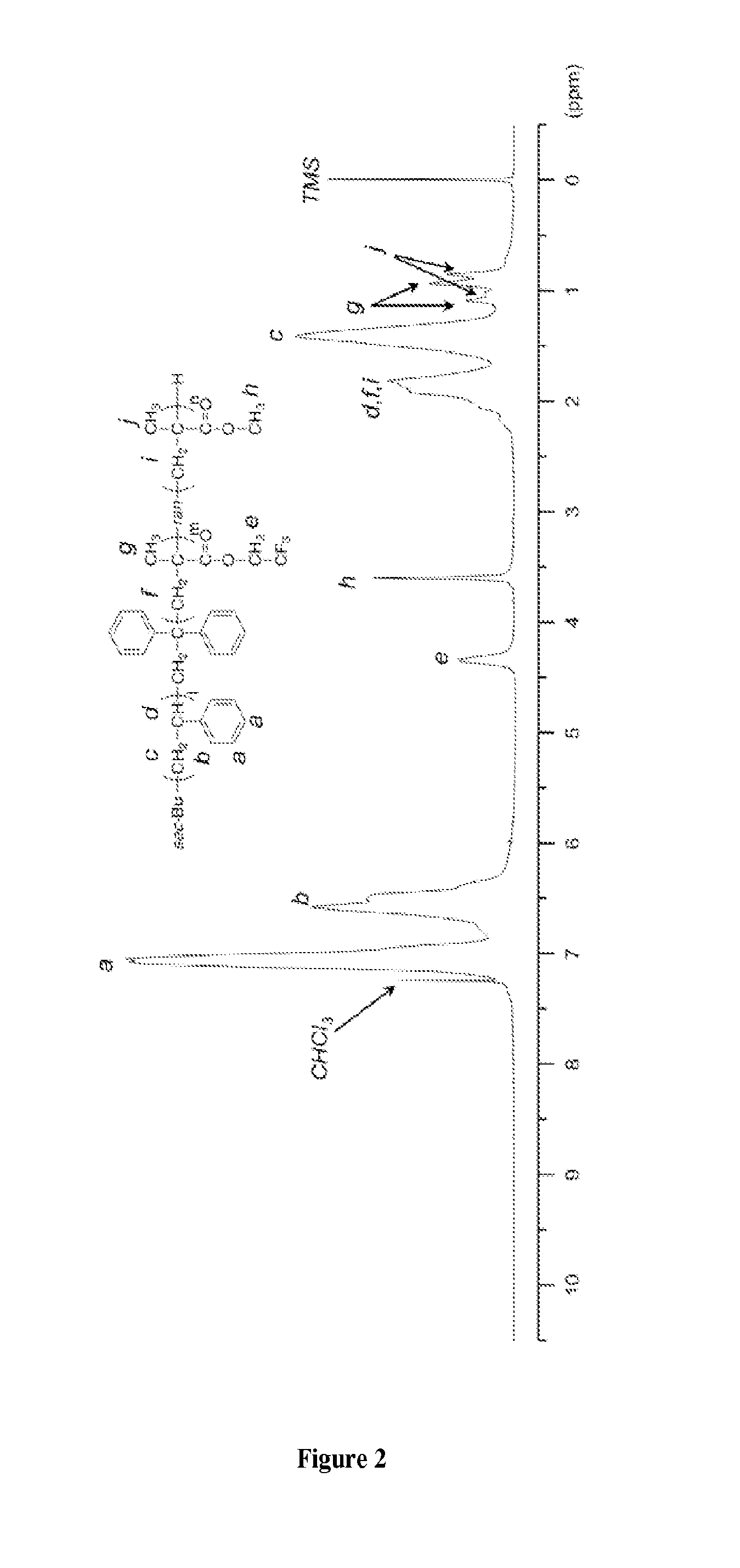Block copolymers and lithographic patterning using same
a technology of lithographic patterning and block copolymer, which is applied in the field of block copolymer, can solve the problems of limiting the advancement of many nanotechnology fields, difficult to form nanometer-sized structures, and low sensitivity to deep-uv and e-beam
- Summary
- Abstract
- Description
- Claims
- Application Information
AI Technical Summary
Benefits of technology
Problems solved by technology
Method used
Image
Examples
example 1
[0069]Synthesis. A series of block copolymers designed with the negative-tone photoresist (polyhydroxystyrene (PHOST) or polystyrene (PS)) and the positive-tone photoresist (poly(2,2,2-trifluoroethylmethacrylate) (PTFEMA) or poly(2,2,2-trifluoroethyl methacrylate-co-methyl methacrylate) (PTFEMA-co-PMMA)) were synthesized by living anionic polymerization in the presence of sec-BuLi as an initiator. The synthetic scheme of PS-b-PTFEMA and PS-b-(PTFEMA-co-PMMA) are illustrated in FIG. 1. All reactions were carried out in 10-fold excess of LiCl and 4-fold excess of 1,1-diphenylethylene (DPE) against sec-BuLi as both PTFEMA and PMMA have carbonyl groups. To obtain a PHOST block, it is necessary to protect the hydroxyl group before polymerization to avoid the termination of living chain end group, therefore a tert-butyl ether protected monomer was used to obtain poly(tert-butyl hydroxystyrene) (PtBuOS), and the hydroxyl group was deprotected after the polymerization. Results of polymeriza...
PUM
| Property | Measurement | Unit |
|---|---|---|
| feature sizes | aaaaa | aaaaa |
| size | aaaaa | aaaaa |
| sizes | aaaaa | aaaaa |
Abstract
Description
Claims
Application Information
 Login to View More
Login to View More - R&D
- Intellectual Property
- Life Sciences
- Materials
- Tech Scout
- Unparalleled Data Quality
- Higher Quality Content
- 60% Fewer Hallucinations
Browse by: Latest US Patents, China's latest patents, Technical Efficacy Thesaurus, Application Domain, Technology Topic, Popular Technical Reports.
© 2025 PatSnap. All rights reserved.Legal|Privacy policy|Modern Slavery Act Transparency Statement|Sitemap|About US| Contact US: help@patsnap.com



